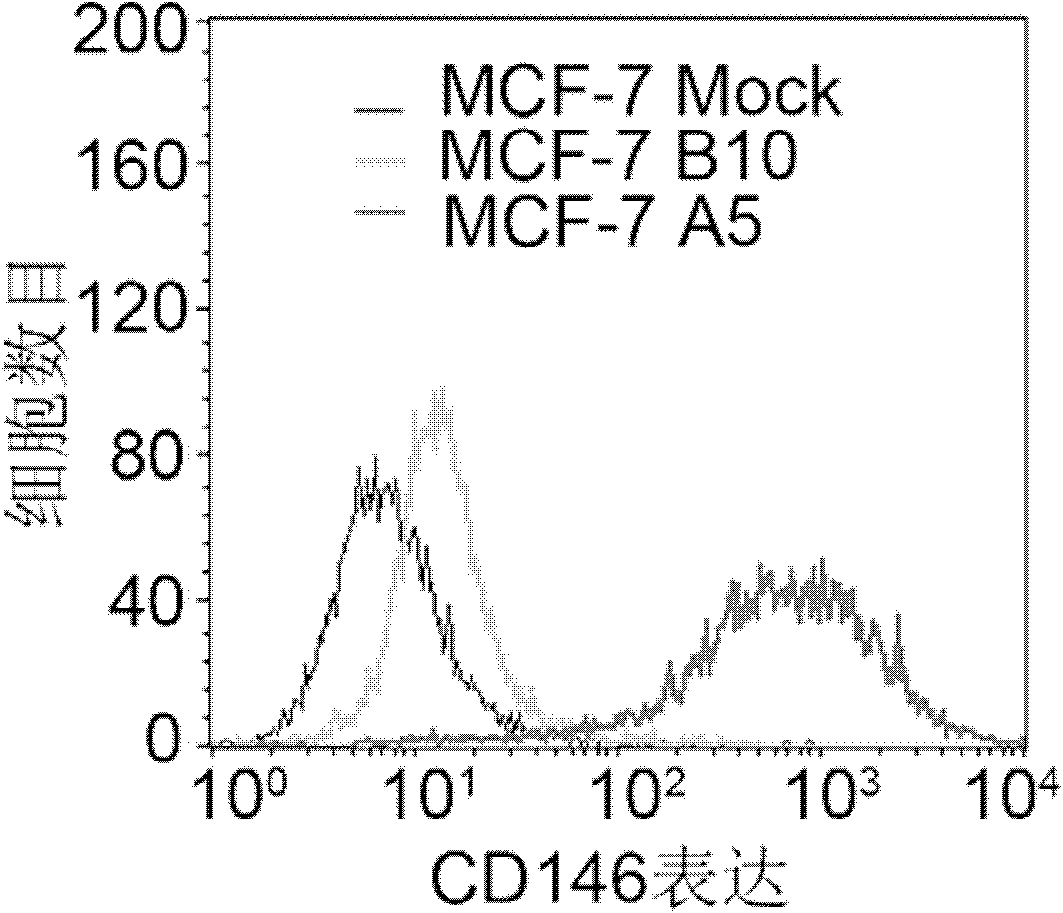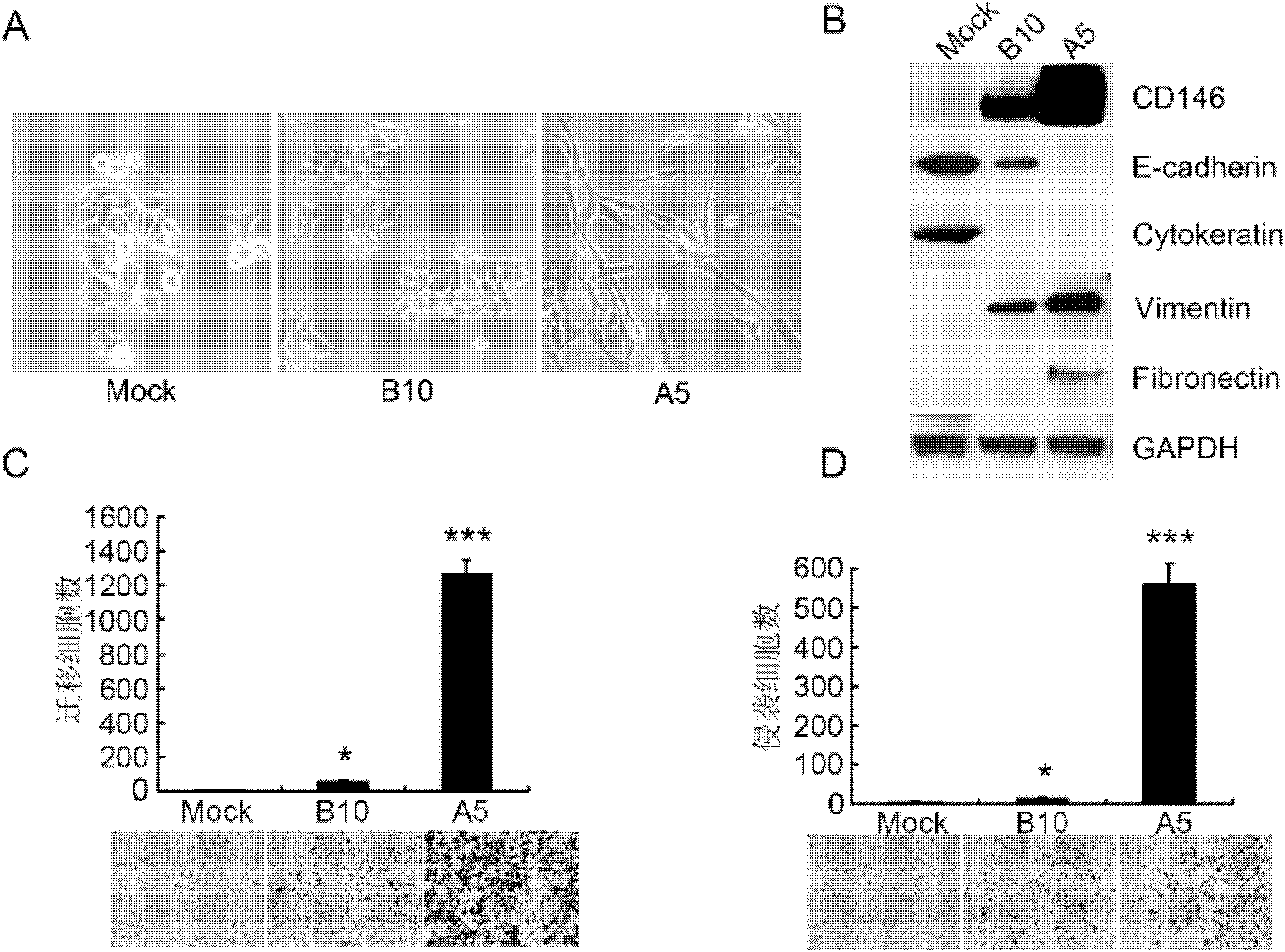CD146 and antibody diagnosis thereof, and application in treating triple negative breast cancer
A technology for triple-negative breast cancer and breast cancer, which is applied in the field of diagnosis and treatment of breast cancer, and can solve problems such as lack of targeting, tissue and organ damage, and toxic and side effects
- Summary
- Abstract
- Description
- Claims
- Application Information
AI Technical Summary
Problems solved by technology
Method used
Image
Examples
Embodiment 1
[0025] Example 1: CD146 is highly specifically expressed in tumor histopathological sections of patients with triple-negative breast cancer;
[0026] Cell adhesion molecules play an important role in the development of breast cancer. CD146 molecule is an important cell adhesion molecule related to angiogenesis and tumor metastasis. In order to study the role of CD146 in breast cancer, we performed immunohistochemical analysis on 90 breast cancer histopathological sections and found that CD146 molecules were highly expressed specifically in triple-negative breast cancer.
[0027] Main materials: paraffin sections of tumor tissues of breast cancer patients, including 44 cases of triple-negative breast cancer and 46 cases of non-triple-negative breast cancer, all from Tianjin Cancer Hospital;
[0028]Main reagents: 4% paraformaldehyde, xylene, absolute ethanol, absolute methanol, hydrogen peroxide, PBS, mouse anti-CD146 monoclonal antibody AA4; the antibodies AA98, AA4, and AA1 ...
Embodiment 2
[0042] Example 2: CD146 overexpression induces EMT in epithelial breast cancer cell MCF-7;
[0043] We chose the CD146-negative cell line MCF-7 cells (purchased from Shanghai Cell Bank, catalog number TCHu74) as the cell model, and found that the high expression of CD146 in malignant triple-negative breast cancer tissues is of great significance. MCF-7 is an epithelial breast cancer cell line with low malignancy, high degree of differentiation, and extremely weak cell migration ability. We overexpressed CD146 molecule in MCF-7, constructed and obtained two stable expression strains, B10 and A5, among which B10 expresses CD146 moderately, and A5 expresses CD146 highly. At the same time, we also transformed the empty vector into MCF-7 cells to construct a control stable strain Mock. The specific process is detailed as follows.
[0044] Main reagent: CD146 cDNA (SEQ ID NO: 7) was originally a gift from Professor Judith P. Johnson of the University of Munich, France, and can als...
Embodiment 3
[0052] Example 3: In an orthotopic breast cancer mouse model, CD146 overexpression promotes the formation of mammary gland tumors, reduces the degree of differentiation of tumors, and promotes in situ invasion and distant migration of tumors;
[0053] We used SCID / Beige to construct a mouse model of orthotopic transplantation of breast cancer, and found that the high expression of CD146 in vivo plays an important role in the occurrence and development of breast cancer.
[0054] Experimental method: 20 4-week-old female SCID / Beige mice (purchased from Victoria Lihua) were selected and randomly divided into 2 groups. Inject 1×10 into the mammary fat tissue pad 6 Mock or A5 cells derived from MCF-7 cells were resuspended in 50ul PBS and mixed with 50ul 2.5mg / ml Matrigel. Observed once a week, measure the length, width and height, in order to calculate the tumor volume. After 10 weeks, when the tumor-bearing mice became weak, all the mice were killed by neck dislocation, the tum...
PUM
 Login to View More
Login to View More Abstract
Description
Claims
Application Information
 Login to View More
Login to View More - R&D
- Intellectual Property
- Life Sciences
- Materials
- Tech Scout
- Unparalleled Data Quality
- Higher Quality Content
- 60% Fewer Hallucinations
Browse by: Latest US Patents, China's latest patents, Technical Efficacy Thesaurus, Application Domain, Technology Topic, Popular Technical Reports.
© 2025 PatSnap. All rights reserved.Legal|Privacy policy|Modern Slavery Act Transparency Statement|Sitemap|About US| Contact US: help@patsnap.com



